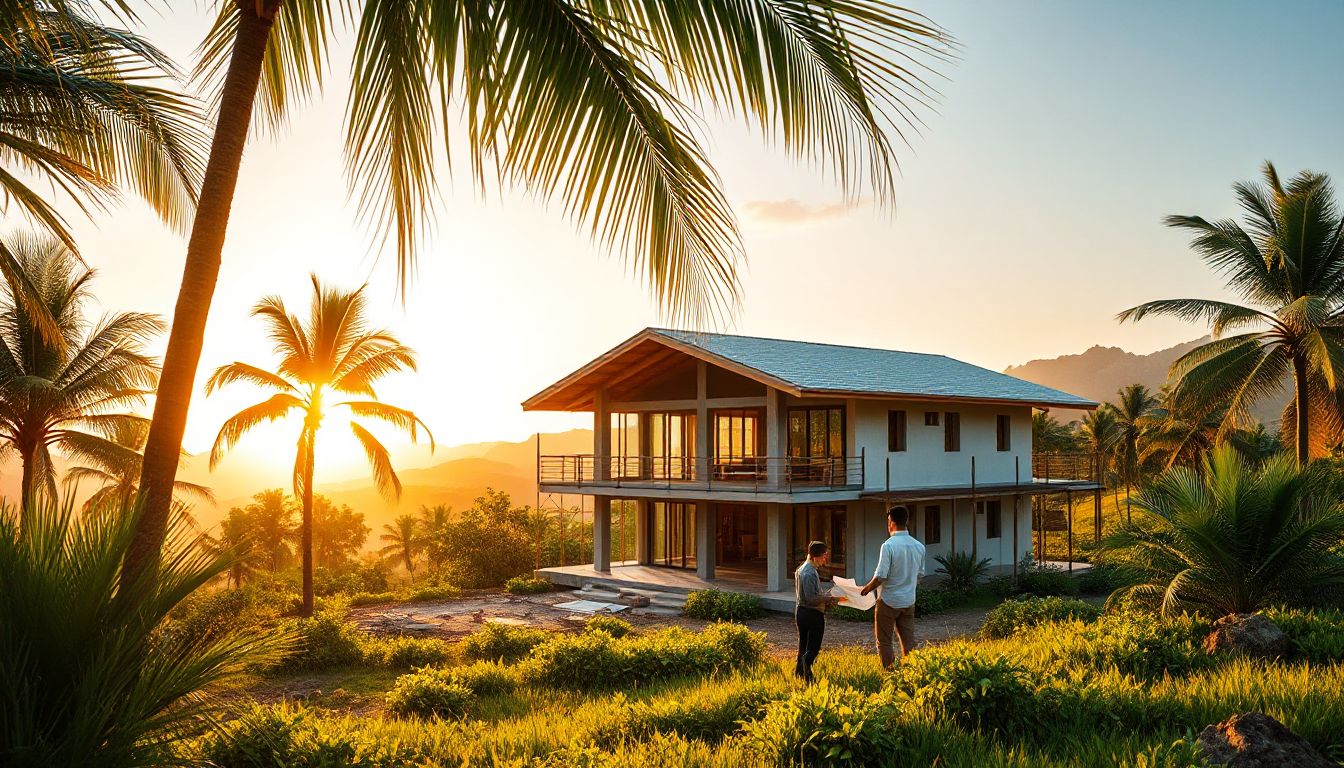Complete Guide to Building a New Home in Thailand

Complete Guide to Building a New Home in Thailand
Introduction
Building a new home in Thailand is becoming more popular for both foreigners and locals. Many see it as a way to own property in a beautiful country while customizing their living space. Constructing a home from scratch offers big advantages—cost savings, design freedom, and land ownership options. But, it also comes with important steps and things to watch out for. Whether you’re planning to settle down or invest, understanding the rules, costs, and tips will help you build smoothly and successfully.
Understanding the Legal and Regulatory Framework in Thailand
Land Ownership Laws for Foreigners
Foreigners can’t own land outright in Thailand, which can be surprising. Instead, they usually lease or buy buildings but not the land itself. Many opt for leasehold agreements, lasting up to 30 years, with options to renew. Some might purchase a limited freehold interest or use a company structure to own land legally. Knowing these options helps avoid surprises later. Legal rules are strict but understandable if you work with knowledgeable professionals for building a new home in Thailand.
Find the proper size of land for building a new home in Thailand, such as this perfectly sized land for building a pool villa. Located near other Thai-Foreigner-owned homes.
Building Permits and Regulations
Every building project needs approval from Thai authorities. The Thai Building Control Act sets safety and quality standards. Before starting, you must secure a building permit, which involves submitting detailed plans and environmental reports. Many projects face delays because of paperwork or missing documents. Planning ahead and working with local experts makes this process smoother.
Hiring Legal and Construction Experts
Having a local lawyer is a smart move. They help navigate laws, permits, and land transfers. Certified architects and engineers ensure your home is safe and follows Thai building codes. Reputable professionals often come with references or show previous work. Investing in good advice and skilled workers reduces risks and keeps your build on track.
Planning and Designing Your New Home
Setting a Realistic Budget
Your budget shapes your entire project. Land prices vary widely—some areas like Bangkok outskirts cost more, while rural land is cheaper. Construction costs include materials, labor, permits, and unexpected expenses. A typical home can cost from $100,000 to over $300,000, depending on size and style. Plan for around 10-20% extra for surprises. Being clear about costs helps avoid overspending when building a new home in Thailand.
Choosing the Right Location
Location affects your lifestyle and property value. Think about weather, access to shops, hospitals, and schools. Coastal areas like Phuket are great for beaches; Chiang Mai offers cooler weather and nature. Check if land has good drainage, is free from flooding, and is easy to access. Remember, land rights and rezoning can vary by area, so always research thoroughly.
Designing Your Dream Home
Work with architects to craft a layout that suits your needs. Consider adding eco features like solar panels, rainwater harvesting, or natural ventilation. Remember, Thailand’s tropical climate demands good shading, wide windows, and breeze pathways. Smart designs reduce cooling costs and make your home more comfortable.
Navigating the Construction Process
Selecting Reliable Contractors
Choosing the right builder is crucial. Look for companies with a strong reputation, clear track record, and positive reviews. Check their previous projects and visit completed homes if possible. A detailed contract with a payment schedule and deadlines protects you. When building a new home in Thailand never rush this step; quality workmanship saves money and stress later on.
Managing Construction Timeline and Quality
Building a typical home takes around 6 to 12 months. Regular visits while construction progresses ensure quality control. Keep communication open with your contractor about progress and issues. Expect some delays—bad weather or material shortages happen. Staying flexible keeps things moving.
Ensuring Compliance and Safety Standards
Your home must meet Thai safety codes and building standards. During construction, safety protocols prevent accidents. Scheduled inspections ensure compliance before moving in. Hiring inspectors or consultants gives peace of mind that your home is safe and legal.
Post-Construction Steps and Home ownership Tips
Final Inspections and Documentation
Before you move in, your home needs a final inspection for occupancy permit. Gather all paperwork showing it passed safety and building standards. Keep warranties and receipts for repairs and appliances. These documents are essential for future resale or repairs when building a new home in Thailand.
Interior Design and Furnishing
Thai markets offer affordable furniture, decor, and building materials. Mixing local and imported items creates a unique style. Consider sustainable options such as bamboo, reclaimed wood, or eco paints. Planning your interior early helps fit everything smoothly into your budget.
Maintaining Your Property
Good maintenance protects your investment. Regular checks for leaks, pests, or mold are vital in Thailand’s humid climate. Landscaping with native plants reduces water use. Simple preventative steps save money and extend the life of your home.
Building a new home in Thailand
Conclusion
Building a new home in Thailand can be a rewarding experience if you plan carefully. From understanding laws to choosing the right land, every step matters. Hiring local experts and sticking to your budget helps ensure a smooth process. Focus on quality and compliance, and you’ll enjoy your dream home for years to come. Take action today—start your journey to a beautiful new home in Thailand now!
Thai Home Design is one of the builders you could start with on your research for building a new home in Thailand.

